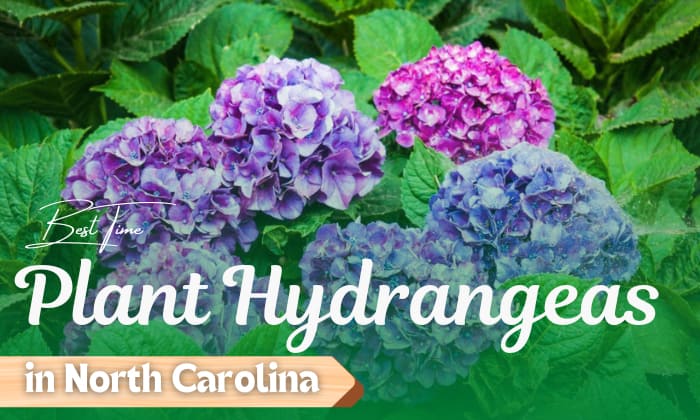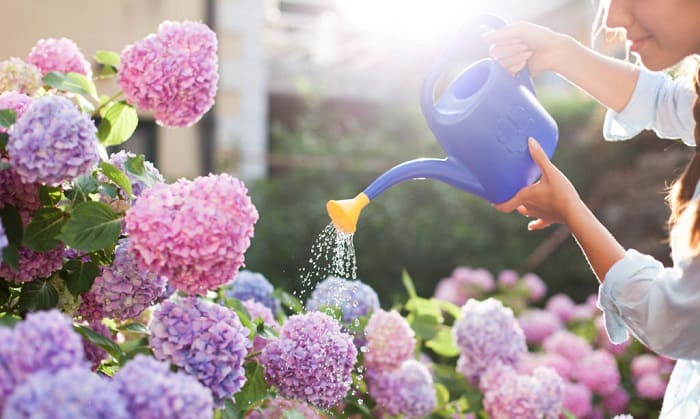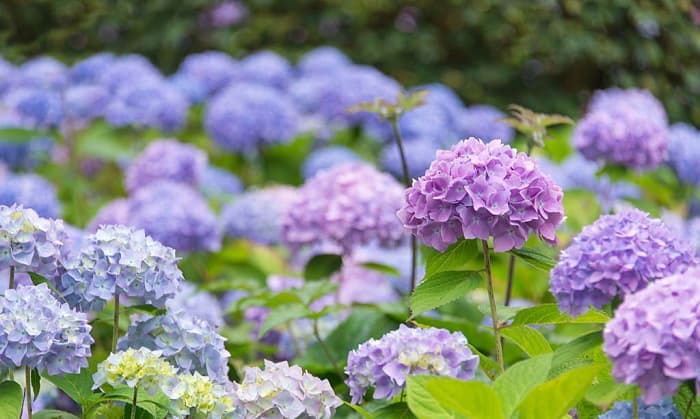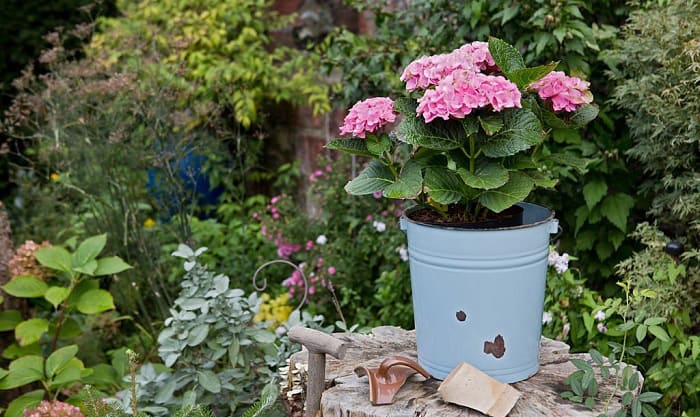Vibrant and colorful, hydrangeas are hard to resist with their clusters of flowers and curb appeal. If you’re looking to brighten up your backyard, it’s hard to select a better plant than this shrub.
It doesn’t hurt that hydrangeas bloom in many US states, either, such as in South Carolina, Montana, and Pennsylvania.
But if you’re here, you’re probably curious when to plant hydrangeas in North Carolina. In short, the best time to do so is around March and April in the spring and September to October in the fall.
Learn ways to narrow down your planting dates below.
Table of Contents
When to Grow Hydrangeas in North Carolina
The ideal time for planting hydrangeas in NC is in the spring and fall when there’s no frost. Usually, it’s best to cultivate them from transplants rather than seeds, as the former will mature quicker and look identical to their parents, unlike the latter.
With that in mind, here are some guidelines you can follow to figure out your gardening dates:
- Grow your transplant outside after the last frost and six weeks before the first frost.
For instance, if you live in Anson County, whose final and first freeze falls on April 16 and October 21, respectively, it’s best to transplant hydrangeas in yard on April 17 or September 9.
- Meanwhile, for gardeners who use seeds instead, I recommend sowing them indoors six to eight weeks before the last frost. Doing so will prevent winds and rain from washing the seeds away and wasting your efforts.
- At the same time, remember to wet the seeds with a damp cloth before potting them. The additional moisture before sowing will increase the rate of germination. In practice, you don’t need to soak the seeds for too long; around two days will do.
- Once the young plant has two leaves and strong roots, it’s okay to transfer it outside. Just make sure the weather is warm and not frosty.
Read more: When to grow hydrangeas in Georgia.
Best Types of Hydrangeas to Plant in North Carolina
Since North Carolina is in hardiness zone 5 to 8, here are the hydrangeas you can grow in the state.
- Climbing hydrangea
- Smooth hydrangea (e.g., Annabelle, Incrediball, White Dome, Grandiflora)
- Bigleaf hydrangea (e.g., Glowing Embers, Lemon Daddy)
- Panicle hydrangea (e.g., Limelight, Tardiva)
- Oak leaf hydrangea (e.g., Alice, Little Honey, Pee Wee)
- Mountain hydrangea (e.g., Omacha Variegata, Intermedia)
Note that when selecting a plant, it’s wise to look up its variety and hardiness regions.
For instance, while Intermedia hydrangeas suit NC’s climate, they’re not ideal for zone 5. Hence, opt for this variety if you’re in zone 7 or other areas of North Carolina.
Tips to Take Care of Hydrangeas
Here are some tips for hydrangea care North Carolina residents should know.
- The best place to plant hydrangeas must have three hours of sunshine at the minimum. Some shade is also essential, especially during afternoons when temperatures are high. However, do not go overboard and block out sunlight entirely, or flowering may not occur.
- Plant hydrangeas in moist soil with an inch of compost. Gauge the dimensions of the pot containing the transplant, then put the nursery seedling in a hole twice as wide with the same depth.
- When you plant hydrangeas in NC, water the flowers before and after sowing. Give them an inch of moisture per week to facilitate root spread and prevent wilting. Plus, irrigate the soil every time it gets dry.
- It is also advisable to fertilize hydrangeas in March, May, and July. One thing, though – test your soil first and supplement the missing nutrients only. There’s no need to add chemicals to the planting medium if it’s in perfect condition.
- Just as importantly, prune hydrangeas according to their type. Varieties that bloom on new wood, namely, Panicle and Smooth hydrangeas, need trimming in late winter before they start growing in spring.
On the other hand, old wood cultivars like Oak leaf, Bigleaf, and Mountain hydrangeas will do well with pruning in June or July. Cutting them in August is ill-advised.
- Finally, take note of the soil pH if you want specific flower colors. Some varieties, like Bigleaf (macrophylla) and Serrata hydrangeas, will turn blue, pink, or red, etc., as the pH changes. Here are the ranges you should keep in mind:
< 5.5 – blue flowers
0 – 6.2 – white flowers
0 and higher – pink or red flowers
FAQs
Do hydrangeas do well in North Carolina?
Yes. As evidenced by the list of cultivars above, hydrangeas indeed grow well in North Carolina. You’ll find them in the coastal, mountain, and piedmont regions of the state, for instance.
Where should you not plant hydrangeas?
Although hydrangeas like partial shade, you should not grow them under trees. If you place them there, two scenarios may occur.
- First, hydrangeas may not flower or grow well due to the trees absorbing all the water and nutrients.
- Second, the raised bed for hydrangeas (if you build it) may starve the trees of oxygen, thereby killing them.
The only exception to this rule is climbing cultivars or Hydrangea anomala, which can develop near trees just fine.
Aside from the surrounding plants, it’s vital to avoid dry soil when planting hydrangeas. These flowers don’t withstand drought that well, and if put in a south-facing location, will be even more susceptible to wilting during summer.
Last but not least, steer clear of windy areas, such as the top or bottom of slopes. If it’s impossible to pick a cool but draft-free plot for planting, consider setting up windbreaks.
Conclusion
To produce bright and healthy blooms, it’s essential that you learn when to plant hydrangeas in North Carolina.
So, remember the tips we shared above, and take note of your plant conditions as well. Signs like yellow and droopy leaves often indicate watering problems, while brown foliage usually stems from excessive fertilizing.
As long as you give your flowers proper attention, hydrangea growth rate will equal at least two feet per year.

Hi, I am William – Floridayards’ digital content creator. My job is to find answers to all your concerns with thorough research and our team’s expert advice. I will also bring you honest reviews on the best products and equipment for raising your beautiful garden. Please look forward to our work!















